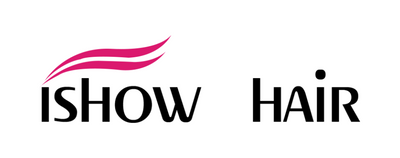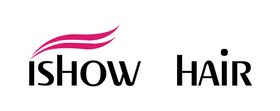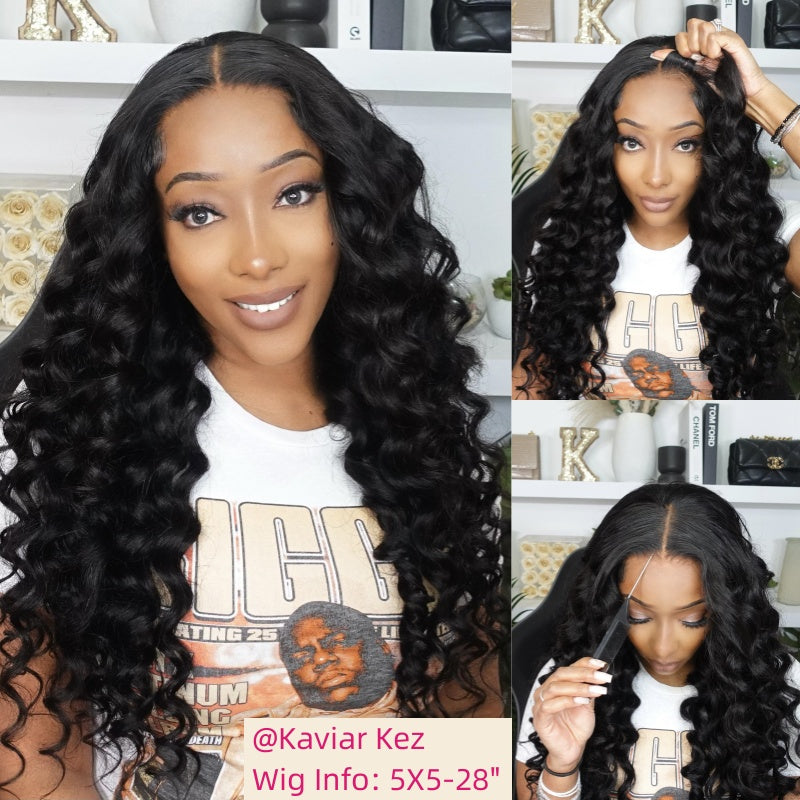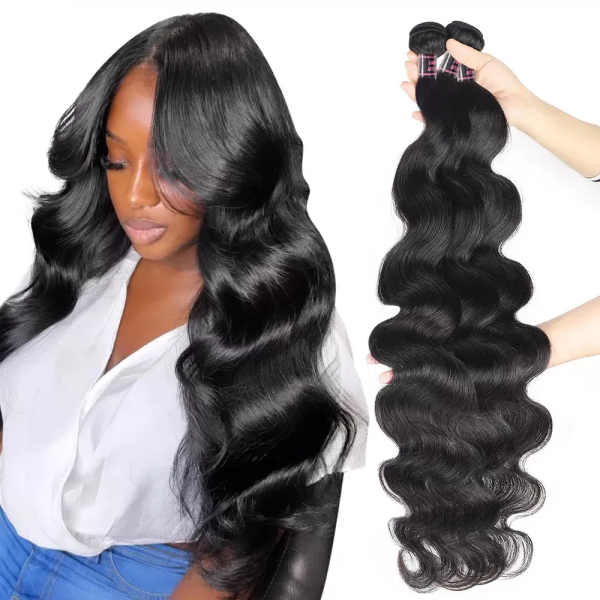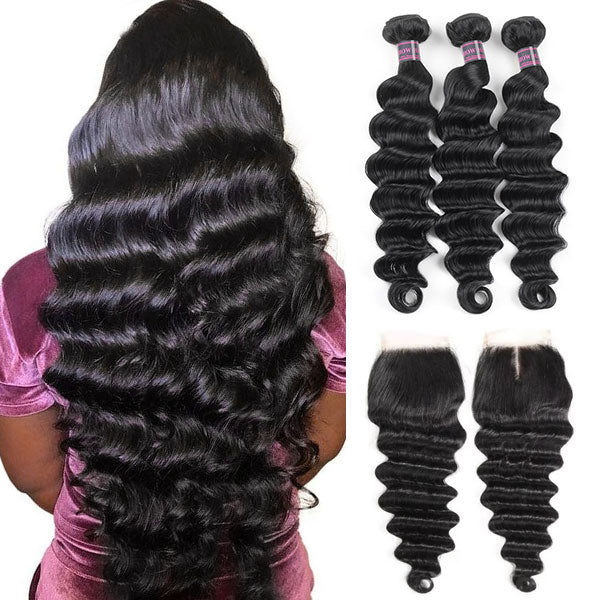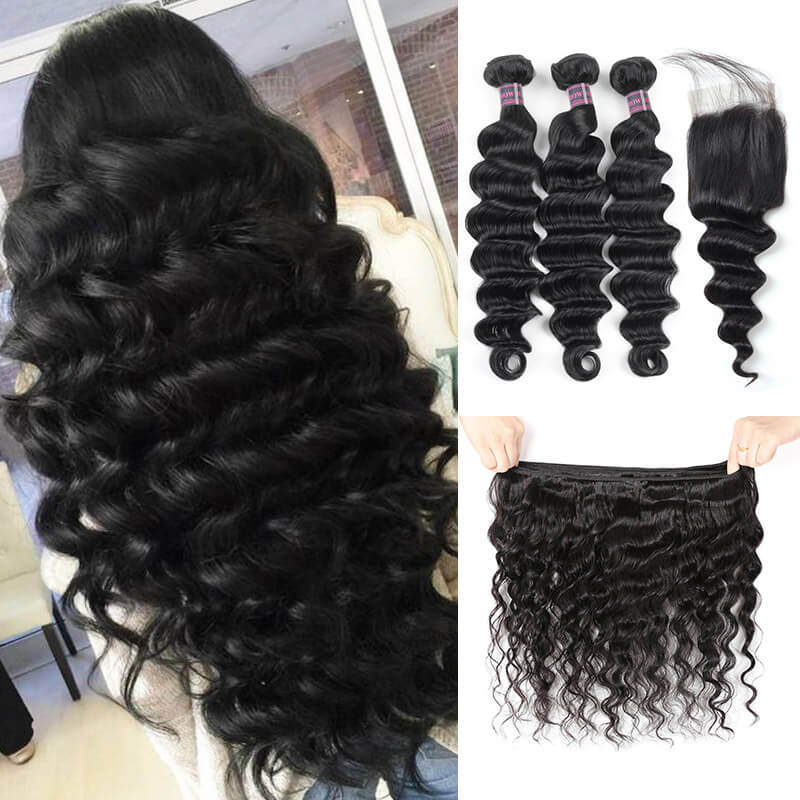Should You Wear T Part Wig Or U Part Wig?
Wigs are a great way to quickly change up your hairstyle or protect your natural hair. Two popular wig construction types are T part wigs and U part wigs. But what’s the difference, and which is better?
In this guide, we’ll compare T part vs U part wigs to help you decide which style works best for your needs and preferences.
What is a T Part Wig?
A T part wig has a strip of lace or other material down the middle that creates a natural-looking part. Hair is knotted and ventilated along both sides of the T part to mimic natural growth from a scalp part line.
The benefits of T part wigs include:
-
Realistic scalp appearance - The part looks like natural hair growth coming from your scalp.
-
Versatile styling - You can freely part and style the hair since knots extend across the entire top.
-
Secure fit - More adjustable straps and combs keep the wig anchored firmly on your head.
-
Beginner-friendly - Easy to put on and style for wig novices.
The downsides of T part wigs can be:
-
Thicker band - The T part band tends to be wider and more noticeable than a U part.
-
Limited parting - You can really only part the hair on either side of the defined T.
-
Less natural hairline - The knots usually start further back from the front hairline.
So in summary, T part wigs offer an easy, secure fit and realistic part for simple styling. But the thick band and set part line limits versatility.
What is a U Part Wig?
As the name implies, U part wigs have a U-shaped section of lace or other material at the parting area. Hair is individually knotted along the U-shaped opening to give the look of hair growing from a scalp.
Some benefits of U part wigs include:
-
Invisible part - The U shape has a more seamless, natural hairline and part.
-
Endless styling - Hair can be parted anywhere throughout the U section.
-
Realistic appearance - individually knotted hairs emerge right from the scalp for a very natural look.
-
Comfortable fit - Lightweight construction and fewer combs allow for greater comfort.
Potential disadvantages of U part wigs can be:
-
Trickier to apply - Positioning the lace part takes practice and patience.
-
Vulnerable part - The U shape needs extra care to prevent tearing or damage.
-
Less secure - Fewer straps and adjustable areas may lead to slipping.
-
Higher cost - Intricate hand-knotting is more labor intensive and expensive.
So in summary, U part wigs offer ultimate versatility and a seamless, natural appearance. But they take more skill to apply and the delicate lace needs special care.
Key Differences Between T Part and U Part Wigs
To further understand which part type best suits your needs, let’s quickly recap the main differences:
-
Parting Area: The T part has a wider but clearly defined parting band while the U part has a narrower, more seamless opening.
-
Hair Knotting: T part wigs have knots scattered across the top while U part wigs have individually knotted hairs only along the part.
-
Styling Versatility: U parts allow hair to be freely parted anywhere along the top. T parts limit parting to either side of the defined T section.
-
Security: T parts tend to have more wig combs and adjustable straps for maximum hold. U parts have fewer combs for a more comfortable, breathable fit.
-
Natural Hairline: U parts have the most invisible, scalp-like appearance while T parts look slightly more artificial up front.
-
Ease of Application: T parts are ideal for beginners since they’re easy to quickly put on and go. U parts require careful lace placement each wear.
-
Cost: Hand-tied U part wigs are typically more expensive due to intricate knotting. Machine-made T part wigs are more budget-friendly.
As you can see, it comes down to your personal priorities and preferences. Now let’s look at which wig may work best for certain needs and lifestyles.
Who Should Wear T Part Wigs?
Here are some key reasons T part wigs tend to work best for some people:
-
New wig wearers - The easy application and built-in part suits those just starting out.
-
Athletic activities - The secure construction stays put during sports and workouts.
-
Low maintenance - The thick band and all-over knotting requires less care and styling.
-
Frequent wear - Machine construction makes T parts more durable for daily wear.
-
Limited budget - Affordable pricing makes T part wigs accessible for more budgets.
-
Sensitive scalps - Fewer combs and adjustable areas prevent irritation.
-
Teens - The modern style and ease suits young wig wearers starting out.
The simple wear and care of T part wigs make them ideal for beginners, active lifestyles, everyday wear, and budget buyers.
Who Should Wear U Part Wigs?
Some key factors that make U part wigs preferential for some wig wearers include:
-
Realistic appearance - The super natural hairline and parting suit those prioritizing a seamless look.
-
Styling versatility - The freedom to part anywhere accommodates wearers who change up their style frequently.
-
Fine or thinning hair - individually knotted hairs replicate the look of natural fine or sparse hair.
-
Intricate hairstyles - U parts allow for delicate styling like updos that show off the part.
-
Photography/film - Invisible lace and a seamless hairline create a flawless look on camera.
-
Special events - Perfect for making a statement at weddings, proms, and other big events.
-
Delicate hair - Hand-tied knots are gentle on fragile, damaged, or thinning hair.
-
Artistic expression - Wearers can change up their entire look for fun using the styling flexibility.
As you can see, U part wigs are ideal if you prioritize versatility, delicacy, and achieving the most seamless, natural wig appearance possible.
T Part vs U Part Wig Comparison Chart
This quick reference chart summarizes the key differences between the two part wig types:
| Wig Feature | T Part Wig | U Part Wig |
|---|---|---|
| Parting Area | Thick, defined T-shaped part | Thin, seamless U-shaped part |
| Hair Knotting | Throughout top | Along U part only |
| Styling Versatility | Limited to parting at T | Part anywhere |
| Security | More combs/straps keep secure | Fewer combs for comfort |
| Natural Hairline | Slightly more artificial | Invisible and seamless |
| Ease of Application | Beginner-friendly | Practice required |
| Cost | Budget-friendly | More expensive |
| Best For | Beginners, sports, regular wear, budget | Versatility, delicacy, seamless look |
This covers the key similarities and differences at a glance to inform your decision between these two popular wig part types.
Tips for Choosing Between T Part and U Part Wigs
When deciding between T part and U part wigs, keep these tips in mind:
-
Consider your wig wearing experience - beginners do best starting with T part wigs.
-
Prioritize natural appearance or security fit based on your needs and activities.
-
Account for your budget - U parts cost more for intricate hand-tied construction.
-
Match the part versatility to how often you change up your style.
-
Understand the maintenance level - U parts need more wig care and gentle handling.
-
Think about activities like sports where security is a priority and T parts excel.
-
Plan to practice applying U parts to perfect placement and get the hairline smooth.
-
Look for U part wigs with stretch in the cap if concerned about slippage.
-
Choose U part for photography and events where seamless styling matters most.
Keeping these points in mind will ensure you select the part design best suited to your lifestyle, preferences, and hair needs.
Caring for Your Wig Based on Part Type
Once you’ve chosen between a T part or U part wig, be sure to care for it properly based on the construction.
T Part Wig Care Tips:
-
Detangle gently using a wide-tooth comb or wig brush. Avoid excessive brushing.
-
Limit washing to 1-2 times per month maximum to prevent shedding.
-
Use wig shampoo and conditioner or a sulfate-free formula made for extensions.
-
Air dry on a wig stand to prevent water damage and maintain the style.
-
Apply silicone-free oils like argan oil to condition the ends and prevent dryness.
-
Store on a styled wig head or hung carefully on a wide-hook wig hanger.
U Part Wig Care Tips:
-
Always finger detangle first, then use a soft brush in small sections to prevent ripping knots.
-
Wash 1-2 times per month max and air dry to avoid lace damage. Soak gently - don’t rub.
-
Apply wig-safe shampoos and conditioners sparingly along the lace to prevent buildup.
-
Prevent matting by gently brushing the ends daily and sleeping in a loose braid.
-
Apply wig-safe serum sparingly along the part to condition the hair without getting greasy.
-
Store upright on a wig stand or styled wig head to avoid crushing the delicate lace part.
Get the Part That’s Right for You
When it comes to T part vs U part wigs, neither is necessarily "better" - it comes down to weighing your priorities and personal preferences.
Think about hair benefits vs ease of wear, budget, lifestyle, and how much time you want to dedicate to styling and wig care. This will point you towards selecting the ideal part design for your needs.
Both T part and U part wigs are fantastic options that provide versatility, practicality, and high-quality style. Determine what really matters most so you can choose the right part wig for your unique needs and rock your beautiful locks!
